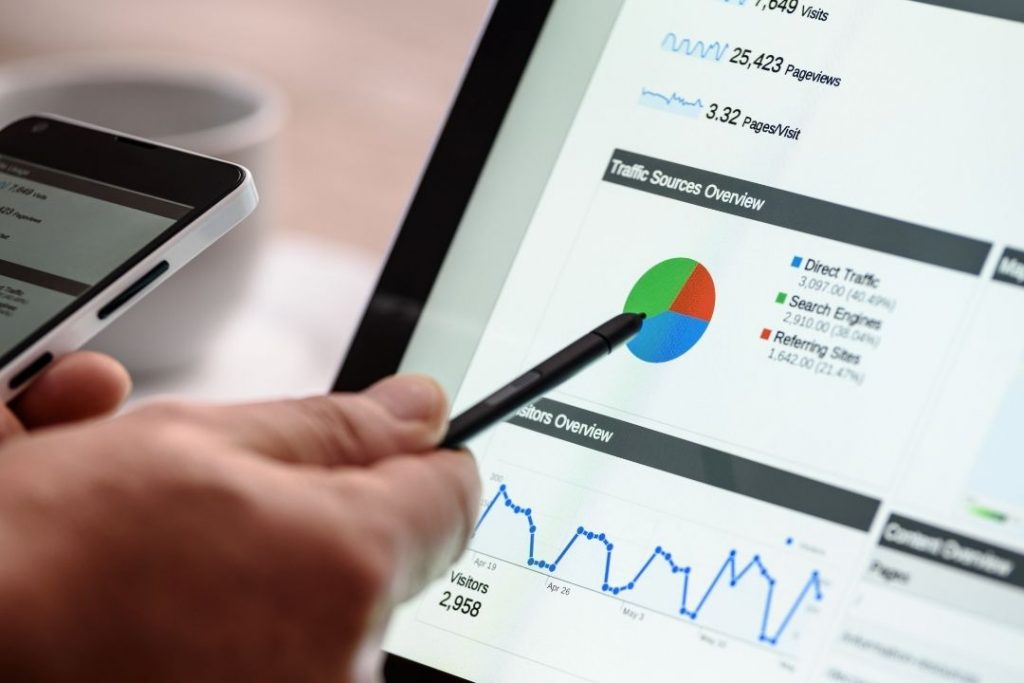New to Google Analytics? Google Analytics (GA) is a powerful reporting tool that can help analyse your website’s data. In essence, it gives you the information you need to continue to grow your online presence by gaining insight into how your potential customers engage and interact with your website. If you’re opening up Google Analytics for the first time, the question of where to start often comes to mind. With so much information readily available and so much more that you could connect and utilise with GA, making sense of the Google Analytics terminology can be vital to your online strategy and business success.
In this week’s article, our digital marketing Brisbane team look at some of the important Google Analytics terminology you should learn to get the most out of your GA reporting.
Google Analytics Terminology You Should Know
Bounce rate vs. Exit Rate
The bounce rate is the percentage of single-page sessions. What this means is where users navigate to your website, view a single page and leave your website. A high bounce rate could indicate problems with the page in question. Maybe it was not engaging enough or did not provide the necessary information to satisfy the user enquiry.
Exit rate, on the other hand, refers to how often users are ending their session or leaving your site off a particular page. It serves to show you which of your pages most users finish their online experience on. If your potential customers are finishing on the contact us page, this could be a good sign of a well-designed funnel. If your customers are finishing their viewing experience on a page without completing your websites funnel, this could indicate some redesign is required.
Pageview
Pageviews are the total number of times a page has been viewed on your website. It can provide a useful representation of which pages on your website are the most popular allowing you to target your users with relevant content more efficiently.
Reports
In the reporting tabs you have the ability to view reports categorised under 5-key displays:
Real-Time
With real-time reporting, GA allows you to understand what’s happening on your website in real-time. It allows you see where your users are browsing your site from (locations), what pages they are currently browsing, how they landed on your website, and if they’ve triggered any of your pre-configured conversion tracking metrics.
The real-time view is extremely helpful when configuring tracking and for watching user behaviour as they navigate through your site. If you find that users are only staying on a single page, you might want to determine if this is your intention or why this might be.
Audience
The audience tab is where you go when you want to learn more about the users who have browsed your site over a specific period. It’s extremely useful it showing you your total amount of users over time, demographics, interests, geolocation and if they’ve visited your website before.
One way you can leverage this is if for example you predominately target women for your product range, but are finding that men are shopping on your site for their partners, friends or family, you can use this information to create content to target these male shoppers.
Acquisition
Acquisition reporting is one of our favourites. The tab provides useful data on how users are finding and being driven to your website. With acquisition data, you can quickly see what traffic channels are your best performers.
Whether it is social media, organic search, referral, direct or other. When connected with Google Ads and Google Search Console, the acquisition reports will also provide you useful information on the search terms your customers have used to reach your website allowing you to tailor your keyword driven content strategy accordingly.
Behaviour
The behaviour reporting tab allows you to track how users have engaged with your website. It can help you answer questions like ‘how long do customers spend on my website’, ‘what landing page have they started on’, ‘what pages do view’, and ‘what was their exit page’.
Understanding behaviour reporting can help with creating your marketing funnel. If your primary goal is to generate telephone enquiries, you want you potential customers to be able to navigate to contact us forms on the website easily. If you want to generate online sales, your potential customers need to be able to go from their initial landing page to a sales page intuitively while also being guided to make that sale.
Conversions
Finally, we have conversion reporting. The conversion reporting tab allows for enhanced eCommerce tracking, and goal tracking according to your pre-defined website goals. You can see the path your users travelled towards a goal conversion, and analyse purchase activity on your site or app. By clearly defining your website goals, you can review your website progress month on month to see if your digital marketing have been effective.
Sessions and Session Duration
Sessions are the period of time a user spends actively engaged with your website. As soon as a user enters your website, a new session is triggered. Sessions will expire after 30 minutes of inactivity or at midnight. While useful in determining how long a potential customer spends on your website, sessions do not provide you with the information on the number of pages or visits of an individual user.
Sessions can, however, be helpful in analysing other metrics such as exit rate, bounce rate and more. If your users are spending only a short amount of time on your website it can be useful to analyse why this might be and if required, make the necessary website changes to engage your users more.
Would you like to learn more about Google Analytics terminology and how you can utilise GA data to take your online marketing to the next level? Get in touch with the team at Resurge Digital on 1300 659 035 and see how our digital marketing company Brisbane team can power up your business online today.

